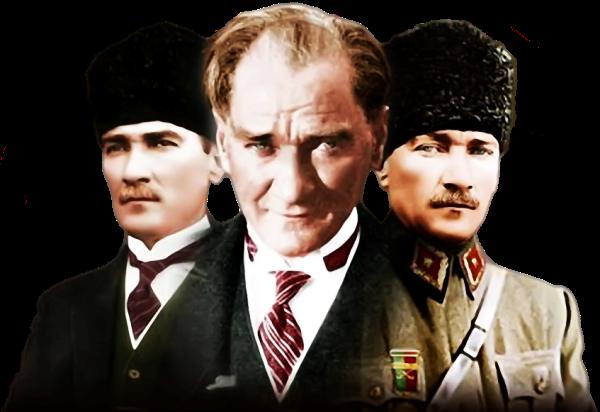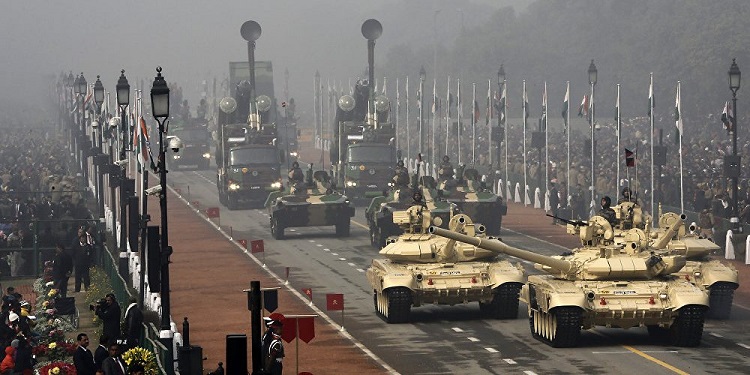
He turned Turkey into an isolated nation-state bereft of its deep Islamic roots and rich Ottoman culture
Sheikh Shahid
THE August 8 issue of Kashmir Observer carried an opinion piece called “Ataturk and the Question of Hagia Sofia” written by Faheem Jeelani Gundroo.
Before examining the reason behind Ataturk’s conversion of Hagia Sofia into a museum, the author sets out to clear the “crusty old bird misconstruction” that Mustafa Kemal was westernised. To foreground his military acumen and leadership, he is compared to the great 12th century Muslim military leader Saladin.
Further, as in awe of Ataturk, my friend dives ahead to draw another comparison. This time, in my opinion, an overblown one. He considers him to be the modern interpretation of Khalid Bin Waleed (Peace be upon him), one of the greatest military generals in history, who the Prophet called Saifullah or the Sword of Allah after the battle of Mutah.
These comparisons conjure up Jonathan Phillips’s biography of Saladin, in which he quotes I. Gershoni and J.P. Jankowski’s “Egypt, Islam and the Arabs”,
“In September 1922, rumors began to circulate in Egypt that Kemal might start a jihad to liberate Egypt from the British. “Poets and illustrators compared him to the Prophet’s companion and great general, Khalid bin al-Waleed, and to Saladin”.
One wonders what those poets and illustrators would have had to say after Ataturk’s modernisation of Turkey!
In 1902, when the results were out at the Royal Military Academy, Mustafa Kemal was number eight among Four hundred and fifty nine cadets. He had graduated with proverbial flying colors. By that time, the curriculum at the academy had come quite close to that of European institutions; majorly at the expense of religious subjects like Persian and Arabic. The academy had been molded by the military and bureaucratic reforms of the early nineteenth century with the goal to churn out educated men with professional militarism instead of ordinary educated citizens.
The spheres of study were heavily influenced by French and later German disciplines as well. Around 1883-1884, the famous German theorist Colmar Von der Goltz visited the academy at the sultan’s invitation and helped transform the academy on the lines of the German institution, Kriegsakademie of Berlin. Along with the introduction of algebra and other technical disciplines, Goltz laid special emphasis on the role of military in the society. In his book, “Das Volk in Waffen” or The Nation in Arms, he had argued that war was inevitable between nations and it was an indispensable duty of the military to encompass all the spheres of the society in their role to defend and drive the nation. In other words, the military was to be the elite class of the society.
Glotz’s ideas of a distinguished military class were not fulfilled until the Young Turk Revolution of 1908. “It was therefore ironic”, writes Klaus Kreiser in his biography of Ataturk that, “Goltz’s ideas gained more currency in the Ottoman Empire than they did in his native Germany”.
By 1908, the idea touted by Goltz was embedded in almost every Ottoman officer’s mind. The idea that they had the duty of transforming the nation and that they were, in fact, the elite among the commoners.
After graduating from the academy, Mustafa Kemal had earned good respect in this “privileged class”. By 1907, this class was quite sympathetic to Goltz’s ideas but was also aware that the Ottoman state was a polyethnic empire with a diverse set of social mores and traditions. In 1907, Ataturk proposed that Ottoman Empire should dissolve itself in order to make way for population exchanges which would in turn give way to the Turkish state. From then on, the prime priority was to vouch for Turkish nationalism.
The victory of Japan over Russia cemented Kemal’s view of a national consciousness. The Balkan wars of 1912-13 had exposed the loopholes in the Ottoman military, following which the government invited Lieutenant General Otto Liman von Sanders for a thorough restructuring of the army across the ranks. World War I was verging on and the Ottoman army proved their mettle with a valorous determination. After the war, the old school officers who were sympathizers of the sultan got sidelined and young officers of Kemal Ataturk’s generation got promoted to important positions. In 1915, Lieutenant Colonel Mustafa Kemal took charge of a division.
However, these military men considered themselves to be a class apart from the masses. Many historians have stated that these young men were attracted to Gustave Le Bon’s idea of crowd psychology in which military is the crown of the ruling elite.
Mustafa Kemal was no different. He had also found Le Bon’s notions very enticing. Recep Cengiz states that he had read Le Bon’s magnum opus, “Lois Psychologiques de L’Evolution Des Peoples” and later Turkish renditions of Le Bon’s “Enseignements Psychologiques de la Guerre Europeenne”, “Le Desequilibre du Monde”, and “Hier et Demain” with unflagging interest.
Another doctrine which was very close to the hearts of the educated class of Turks to which Ataturk belonged was the German philosophy of vulgar materialism; a potpourri of materialism, rationalism and Darwinism. Later, the ottoman version of this materialism centered upon the downplaying of religion. Their idol was the German physiologist Ludwig Buchner, the author of “Kraft und Stoff” or Force and Matter.
Ataturk was no intellectual but he certainly was a good reader. He had read Leone Caetani’s “Annali dell’Islam” in Turkish translation. Infact, Quoting Recep Cengiz, Sukru Hanioglu writes, “He seems to have fully agreed with the Italian Orientalist that revelation was a myth fabricated by Muslim tradition; that the Quran represented Muhammad’s own composition; that the prophet adopted many practices from Judaism: and that the driving force behind Islamic expansion was not religious zeal but the rapacity of the Arab tribesmen” He further comments that, “As president of the Republic, he went so far as to make cautious use of Caetani’s words when drafting a chapter on the origins of Islam for the official high school history textbook.”
In November 1922, the Sultanate had been abolished but the Caliphate was still there. There were emotions of Muslims attached with the institution. Mustafa Kemal himself praised the Caliphate as an emirate tying together Muslims, which would prove very prosperous to the Turkish state and the entire Muslim world.
However, he was also aware that the Caliphate was that one institution which could prove to be an obstacle on his way to be the nationalist autocratic ruler of Turkey. As Sir Mohammad Iqbal had said:
“main khatakta houn dil-e-yazdan main kantay ki tarah”
Like a thorn, I rankle God’s heart
On March 1, 1924, the National Assembly opened for a session and in the opening speech, Mustafa Kemal made three main points: safeguarding of the Republic, the creation of a national education system, and the need to cleanse and elevate the Islamic faith by rescuing it from being used as a political instrument. He emphasized that politics was harmful to religion when he stated, “it has now become a plainly evident truth that it is necessary to liberate and to elevate the Islamic religion from its position of being a tool of politics, in the way that has been traditional for centuries”. He then prepared a draft bill to abolish the Caliphate.
On March 2, 1924, the proposals of Mustafa Kemal were discussed and accepted in a meeting. After 623 years of being founded by Osman along the borders of Byzantine Empire, the Ottoman sultanate was abolished.
Alama’s lamentation immediately rings the mind;
Chaak kar di turk-e-nadaan ne khilafat ki Qaba
Saadgi muslim ki dekh, auroun ki ayaari bhi dekh
The Imprudent Turk has torn the cloak of the Caliphate
Just look at the unfamiliarity of the Muslim and also look at the cunningness of others – (The Eid Crescent- Sir Mohammad Iqbal) Gazi Dogan, a PhD student in the department of History at Kansas State University writes that after the establishment of the Kemalist single-party regime, social and legal reforms were launched and implemented by the Kemalist Government in a Jacobin way.
In 1925, the Hat Law was introduced. Mustafa Kemal was of the mind that European civilization would not accept the Turkish people in a fez, which he said, “sat on our heads as a sign of ignorance, fanaticism, of hatred to progress and civilization”. The New York Times stated that “Mustapha Kemal and his associates evidently want the Turks to cease being a peculiar people, in either garments or habits.”
Another “reform” was closing down of the Dervish lodges. In 1925, the Tarikats, religious orders and dervish lodges were banned by the Government. “This was one of the significant Jacobin-style interventions in the people’s religious life during the Kemalist modernization. As a modernist, Mustafa Kemal showed zero tolerance to the religious social institutions which were seen as responsible for the backwardness of the Turkish society”, writes Gazi Dogan.
The new turkey was to be rid of its Islamic past. Consequently, hijab was banned, shariah was outlawed and even Azaan didn’t sound the same.
The language reforms were another sad legacy of the Kemalist regime. The Arabic alphabet was replaced by Latin alphabet of Europe. This cut off Turks from their Islamic history. They could no longer read the calligraphic inscriptions in old imperial mosques and neither could they read the vast Islamic literature. In a way, Turkey was forced into an isolated nation-state bereft of its deep Islamic roots and rich Ottoman culture.
To conclude, it won’t be inapposite to say that Mustafa Kemal Ataturk, being the first president, was also Turkey’s first Islamophobic statesman and military general.
- Sheikh Shahid from Thamuna, Pulwama is a Science graduate with a passion for literature and history
Follow this link to join our WhatsApp group: Join Now
Be Part of Quality Journalism |
Quality journalism takes a lot of time, money and hard work to produce and despite all the hardships we still do it. Our reporters and editors are working overtime in Kashmir and beyond to cover what you care about, break big stories, and expose injustices that can change lives. Today more people are reading Kashmir Observer than ever, but only a handful are paying while advertising revenues are falling fast. |
| ACT NOW |
| MONTHLY | Rs 100 | |
| YEARLY | Rs 1000 | |
| LIFETIME | Rs 10000 | |













